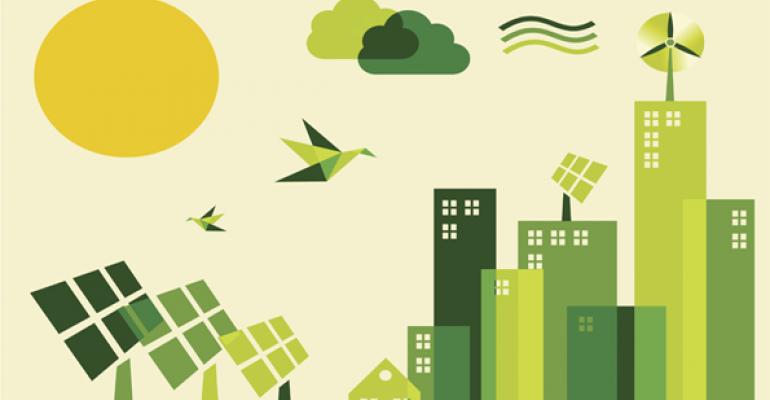Sustainable design features including energy efficiency and good indoor air quality are now becoming so common that they are almost taken for granted.
“What used to be exceptional is now everyday,” says Dave Borsos, vice president of capital markets for the National Multifamily Housing Council (NMHC), a multifamily industry advocacy group.
Today, new apartment units almost always include some green features. And the owners of older buildings often incorporate sustainable design component in their plans to renovate and refinance existing properties. For example, nearly half (42 percent) of overall multifamily financing provided by Fannie Mae in 2017 qualified for its Green Rewards program, which offers lower interest rates to apartment properties that have earned green building certifications or pledge to cut their energy use by 25 percent or more through renovations.
At the same time, apartment renters have come to expect green building features like good indoor air quality and energy efficiency, making them more of a requirement in many markets. “For new buildings, it’s kind of what people do today,” says Borsos.
Renters take green features for granted
Apartment renters’ interest in sustainable design is still strong enough to translate into real money for property owners. They are willing to pay an extra $27.21 a month in rent to live in buildings that have green certifications—that works out to more than $300 a year per apartment in extra income, according to the “2017 NMHC/Kingsley Renter Preferences Report.” The report uses surveys of 269,000 renters about which factors guide their decisions on where they want to live.
Roughly two-thirds (61 percent) of renters said that they were “interested” or “very interested” in living in apartment buildings that have earned a certification for energy efficiency or sustainable design in 2017, according to the report. That’s a majority of those surveyed, but it’s still less than the three-quarters of renters (75 percent) who said they were interested in such features in 2015. The same is true for buildings that recycle (which interested 75 percent of renters in 2017 vs. 80 percent in 2015), and buildings that have sustainability initiatives (65 percent vs. 73 percent).
The cost of incorporating many green features in apartment properties has also dropped to be roughly comparable to conventional construction. “There is no cost difference any more—green has become standard practice,” says Borsos.
For example, energy efficient light bulbs used to be considerably more expensive than conventional lights, and quality of light created by the fixtures was often noticeably different from the warm glow created by incandescent bulbs. Today those differences have largely vanished. “The cost to replace is not the light bulb, but the cost to get the ‘cherry picker’ out there,” says Borsos. “From a maintaining a building and the return of investments, it makes a lot of sense.”
Green features are commonplace for Fannie Mae borrowers
In 2017, Fannie Mae provided $27.6 billion in financing to apartment properties that qualified for its Green Rewards program. That’s close to half of Fannie Mae’s total $67 billion in multifamily financing activity.
Fannie Mae’s Green Rewards program often slices roughly a fifth to a third of a percentage point off the interest rates offered to apartment borrowers. Fannie Mae and Freddie Mac offer the discount on all of their loans to qualifying properties, from short-term rehab loans to permanent financing.
Lenders are making programs like Green Rewards work for all of the borrowers, not just the few that have made green building a mission. “We are looking to be easier for the smaller owner,” says Chrissa Pagitsas, director of the green financing business for Fannie Mae. “The people that haven’t done green yet are going to be the harder ones to reach.”





